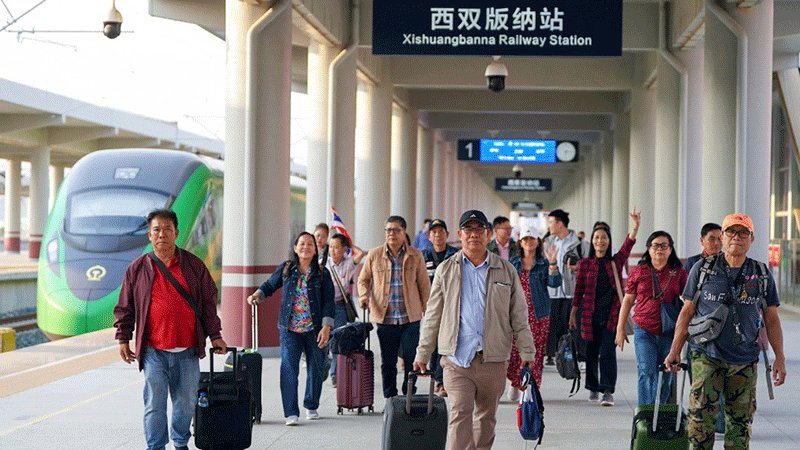 |
| |
Cross-border railway’s benefits hailed
(China Daily) -- The China-Laos-Thailand Railway, with construction ongoing for the Thai section, has significantly enhanced regional connectivity and economic growth, despite several social and environmental challenges, according to a recent report.
Led by scholars from China, Laos and Thailand, the report released in Bangkok earlier this week was based on research on the social and economic impact of the completed portion of the high-speed network that will connect Thailand with China through Laos.
Currently, the railway has the section connecting the southwestern Chinese city of Kunming with the Lao capital of Vientiane fully operational. Thailand expects to complete its portion of the network linking the country to China by 2030.
In Thailand, construction of the first phase linking Bangkok and Nakhon Ratchasima is about 36 percent complete. On Feb 4, the Thai Cabinet approved the second phase of the project that will extend to Nong Khai, which borders Laos.
The second phase also includes the construction of a logistics hub in the northeastern Nong Khai province, which will facilitate freight movement between Thailand’s 1-metre gauge railway and the 1.435-metre standard gauge used in the China-Laos Railway, offering a one-stop service for cargo transfer, Thai government spokesman Jirayu Houngsub said at a recent news conference.
“The railway has improved trade efficiency and logistics, reinforcing China’s role as a global infrastructure leader,” said Tian Qian, director of the Institute of South and Southeast Asia Studies at Yunnan Minzu University.
As a main contributor to the research’s section on the influence in China, Tian said the railway has also fostered cross-cultural exchanges and social mobility, facilitating better access to education and healthcare.
In Laos, the railway has emerged as a crucial economic and transportation link, enhancing tourism and boosting local businesses in Vientiane, Luang Prabang and Luang Namtha regions, according to Lumngeune Souliyavong, a researcher from the National University of Laos.
“The influx of visitors has stimulated the hospitality, transportation, and trade sectors, creating new employment opportunities,” he added.
In Thailand, anticipation is growing over the railway’s potential to drive urban expansion, economic connectivity and real estate growth in key cities, said Thanapauge Chamaratana, associate professor in the Faculty of Humanities and Social Sciences at Khon Kaen University who led the research in Thailand.
“Land prices near future railway stations have already surged, reflecting increased investment interest. The project is expected to solidify Thailand’s role as a logistics hub in Southeast Asia,” he said.
However, the report also raises challenging issues such as noise and a shortage of skilled labour in railway operations.
While the China-Laos-Thailand Railway is reshaping regional connectivity, trade and urban development, the report emphasised the need for sustainable and inclusive policies to ensure that the project benefits all stakeholders.
It is suggested that addressing challenges such as community displacement, economic inequalities, and environmental concerns will be critical in the next phases of development.
As the project progressed, researchers have called for continued collaboration among governments, the private sector and local communities to optimise the long-term benefits of this ambitious infrastructure initiative.
(Latest Update February 24, 2025)
|